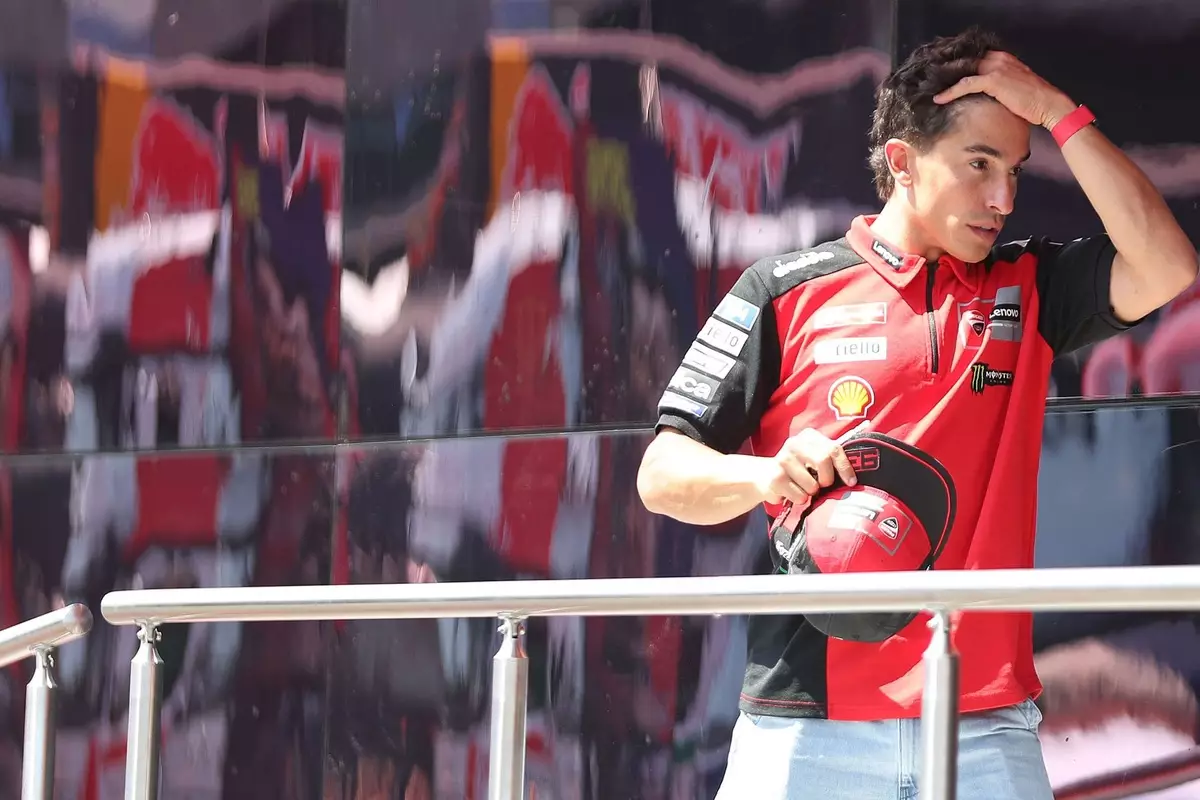The modern MotoGP landscape is teetering at a crossroads between tradition and innovation. While technological advancements have historically aimed to enhance safety and performance, recent initiatives like the new stability control system threaten to undermine the very skill that riders and fans celebrate. The introduction of software that moderates engine torque during slides raises profound questions about what constitutes true racing prowess. For legend riders like Marc Marquez, the move feels less about safety and more about diluting the rider’s influence on race outcomes. It’s as if the series is gradually shifting away from raw rider talent towards a reliance on electronics that, paradoxically, might diminish the very unpredictability that fuels excitement in MotoGP.
Marquez’s candid opposition underscores a deeper philosophical debate. His multiple highside crashes, some nearly career-ending, have made him painfully aware of the dangers involved in aggressive riding. Yet, he argues that removing rider input through electronic aids strips away authenticity. To him, racing should be a test of human skill, not a game of programming and electronic interference. While safety is imperative, Marquez fears that the trend toward automation and electronic assistance could stifle the artistry that defines MotoGP, diluting it into a mechanical pursuit where rider decisions matter less. His stance questions whether technological safety nets are worth sacrificing the sport’s soul.
Strategic and Ethical Implications of Electronic Aids
Pedro Acosta’s stance aligns with Marquez’s skepticism, emphasizing that the core appeal of motorcycle racing is in human performance. Acosta, often heralded as a talented rising star, advocates for the future of MotoGP to move away from electronic aids altogether. His viewpoint suggests that an increasing reliance on software might contribute to a homogenization of riding styles, eroding the unique flair each rider brings. He emphasizes a nostalgic belief: that advancements should serve to enhance rider mastery, not suppress it.
This perspective gains even more weight considering the upcoming regulatory landscape for 2027, which aims to restrict ride height devices and other aerodynamic aids. The parallel drawn indicates a desire for a purist approach—an effort to reignite rider skill as the primary factor in racing results. Yet, this raises questions about the ethical ramifications for manufacturers. Are these innovations purely safety measures, or is there an underlying motive to maintain competitive parity through technological restrictions? The answer is complex; the line between safety and technological control becomes increasingly blurred, raising concerns about fairness and the future integrity of the sport.
The Reality of Competition and Human Edge
Contrary to the growing opposition, some voices like Marco Bezzecchi suggest that the essence of racing won’t be compromised by electronic aids. His perspective reflects an optimistic belief that, ultimately, skill and ingenuity will always triumph over technological crutches. He argues that when riders adapt and fine-tune their setups, the human element will once again dominate the outcome.
However, this optimistic view underestimates the subtle yet significant influence of electronic aids. These systems can subtly and consistently optimize performance, reducing fatigue and avoiding mistakes—a player’s secret advantage. While true mastery involves managing these systems alongside traditional skills, their increasing presence risks turning racing into a game of who can best manipulate electronics rather than who can ride the fastest on instinct and intuition.
Moreover, the effectiveness and impact of the new stability control system are still under scrutiny. Riders have experimented with it during testing, but its tangible influence on race dynamics remains uncertain. While some see it as a safety net, others view it as an unwelcome constraint—a technological leash that could hamper the unpredictability and raw excitement that make MotoGP compelling.
The ongoing debate illuminates a deeper tension: Should motorsport evolve into a test of human skill or a showcase of technological mastery? While authorities justify these aids as safety measures, the resistance from top riders underscores a fear that the sport is veering away from its core appeal—riders’ daring, skillful maneuvers that captivate millions worldwide. It’s a delicate balance, one that may determine whether MotoGP remains a brutal test of human courage or succumbs to an era of electronic control masquerading as innovation.


Leave a Reply